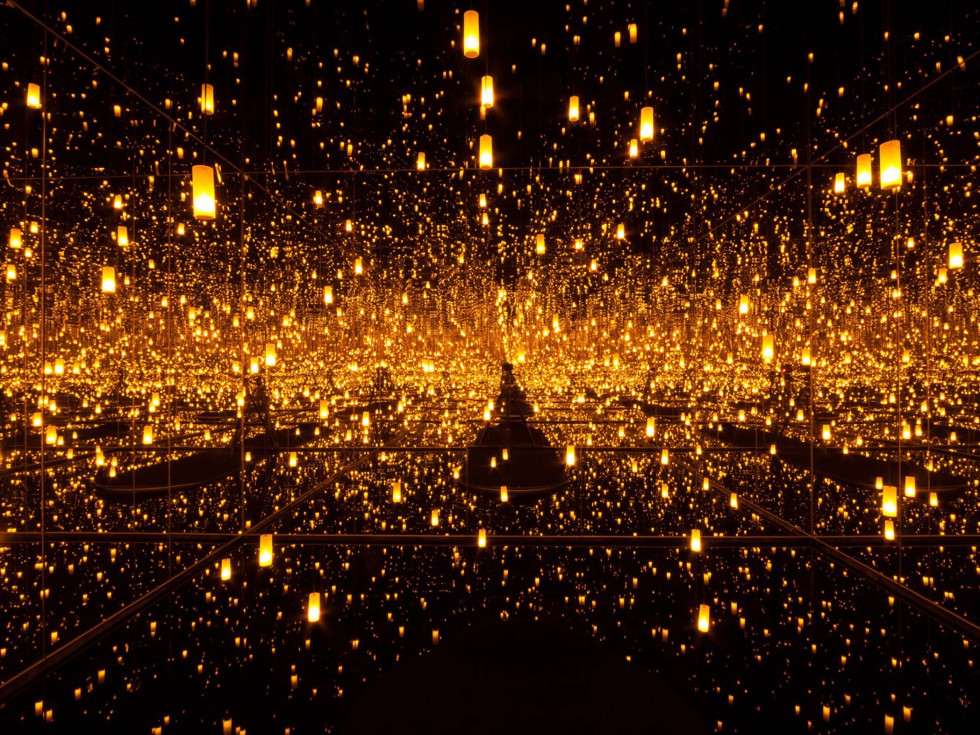

Make a sketch using your paper and mark-making materials. Sketch your design! Kusama often sketches her ideas.What colors and patterns do you see? For our project, we were inspired by the pattern of fireworks in the night sky. What idea is on your mind? Close your eyes. Yayoi Kusama created Flowers- Overcoat and might have been inspired by the floral patterns she saw as a child. Optional: planning materials (a piece of paper and mark-making materials).Mark-making materials (paint, markers, etc.).Obliterating materials (paint, paper, coffee filters, tissue paper, tulle, beads, felt, stickers).Connecting materials (glue, tape, pipe cleaners, rubberbands).Coat structure (paper or plastic grocery bag, large box).Gather materials to make your wearable work of art.Read more about Yayoi Kusama’s life and work.įor this project, we take inspiration from Kusama’s Flowers-Overcoat to design (and obliterate!) a piece of wearable art using a bag or a box as the structure. Repeating the images she sees in her hallucinations is a way for her to obliterate them, or make them disappear. She creates many kinds of art, including paintings, mirrored rooms, and sculptures. How do you make yourself feel better when you’re scared? Making art has been a form of therapy for Kusama. I saw the entire room, my entire body, and the entire universe covered with flowers, and in that instant my soul was obliterated and I was restored, returned to infinity, to eternal time and absolute space.” “One day, after gazing at a pattern of red flowers on the tablecloth, I looked up to see that the ceiling, the windows, and the columns seemed to be plastered with the same red floral pattern. Have you ever looked at a pattern, like polka dots, for so long you could see it even after you moved your eyes? Kusama shared this experience from childhood: Many of her hallucinations show patterns spreading out and covering everything, like the flowers on Flowers-Overcoat. A hallucination is when you see or hear something that’s not actually there. Kusama has been making art for the last nine decades, and still makes art every day!įor most of Kusama’s life, she has experienced hallucinations, often of dot-covered surfaces. Have you ever heard of the “Princess of Polka-Dots?” Japanese artist Yayoi Kusama is known for her polka-dot covered artworks including paintings, sculptures, and mirrored rooms. For Flowers-Overcoat, the conservation team uses a tiny spatula ( see a photo here) to heat up wax and reattach flaky paint to the artwork.ĭrawing of Yayoi Kusama by Anne Matlock for the Hirshhorn Museum and Sculpture Garden. Conservators are scientists who help keep museum objects, such as this work of art, safe.

The paint on this artwork, especially on the flowers, is very fragile and requires special care from conservators at the Hirshhorn. Her design covering the entire surface allows the flowers to obliterate, or disappear, into the coat. Kusama arranged the flowers in an all over pattern and painted them the same bronze color as the coat. She also added a large signature to the back of the work. Next, Kusama painted the flowers the same color as the coat. She started with a normal black coat, painted it, and attached plastic flowers. This artwork by artist Yayoi Kusama is called Flowers-Overcoat. The coat is covered in flowers of the same bronze color. You probably noticed a long, bronze-colored coat hung against a white wall. How might it feel on your body? Where would you wear a coat like this? Imagine yourself stepping inside this coat.

Hirshhorn Bequest and Purchase Funds, 1998. Hirshhorn Museum and Sculpture Garden, Smithsonian Institution, Washington, DC, Joseph H.


 0 kommentar(er)
0 kommentar(er)
